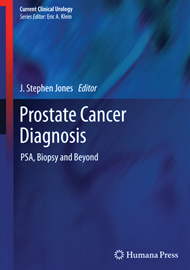The danger of many of the texts which deal with this rapidly changing field is that by the time the texts are published they are out of date. This book however remains fresh, in part because it acknowledges that there are a variety of diagnostic modalities which are in current use and it importantly avoids demonising those established techniques which remain as a pretty standard treatment algorithm for many clinicians.
There are some useful reminders regarding prostate specific antigen (PSA) testing, dynamics and ratios, etc. and some of the newer techniques aimed at enhancing its capabilities (although chapters on blood-based tumour markers, etc. did seem a little tired). Aspects of transrectal and transperineal biopsies were dealt with well and had excellent discussions regarding the management of complications, etc.
Likewise chapters devoted to saturation and mapping biopsies were well worth the read. Aspects of imaging were particularly well reviewed as was the difficult topic of negative biopsies. I suspect this book will appeal to the vast majority of higher surgical trainees and established urologists many of whom deal with an increasingly complex diagnostic pathway, which is often far more challenging than the ablative endpoint.





